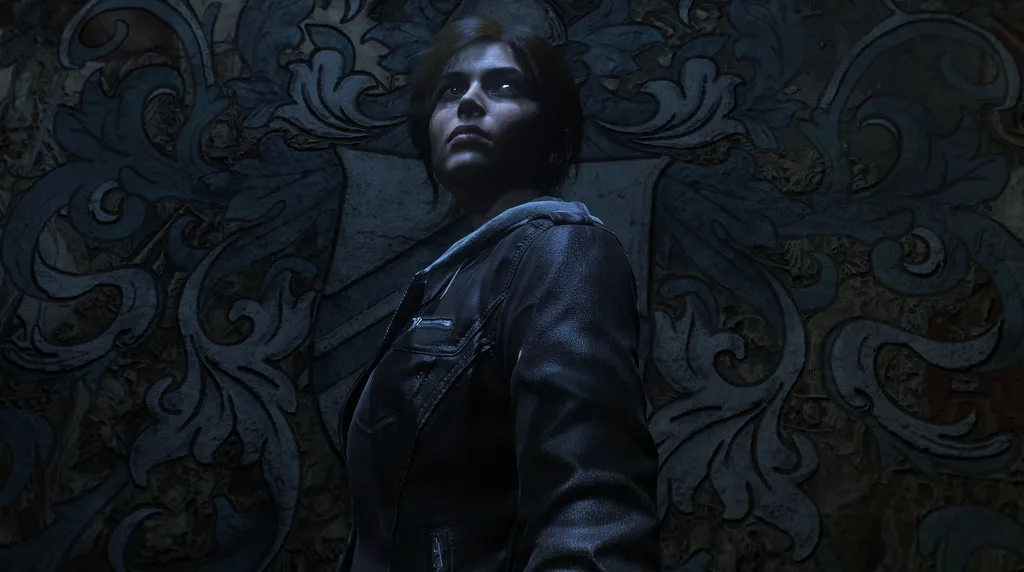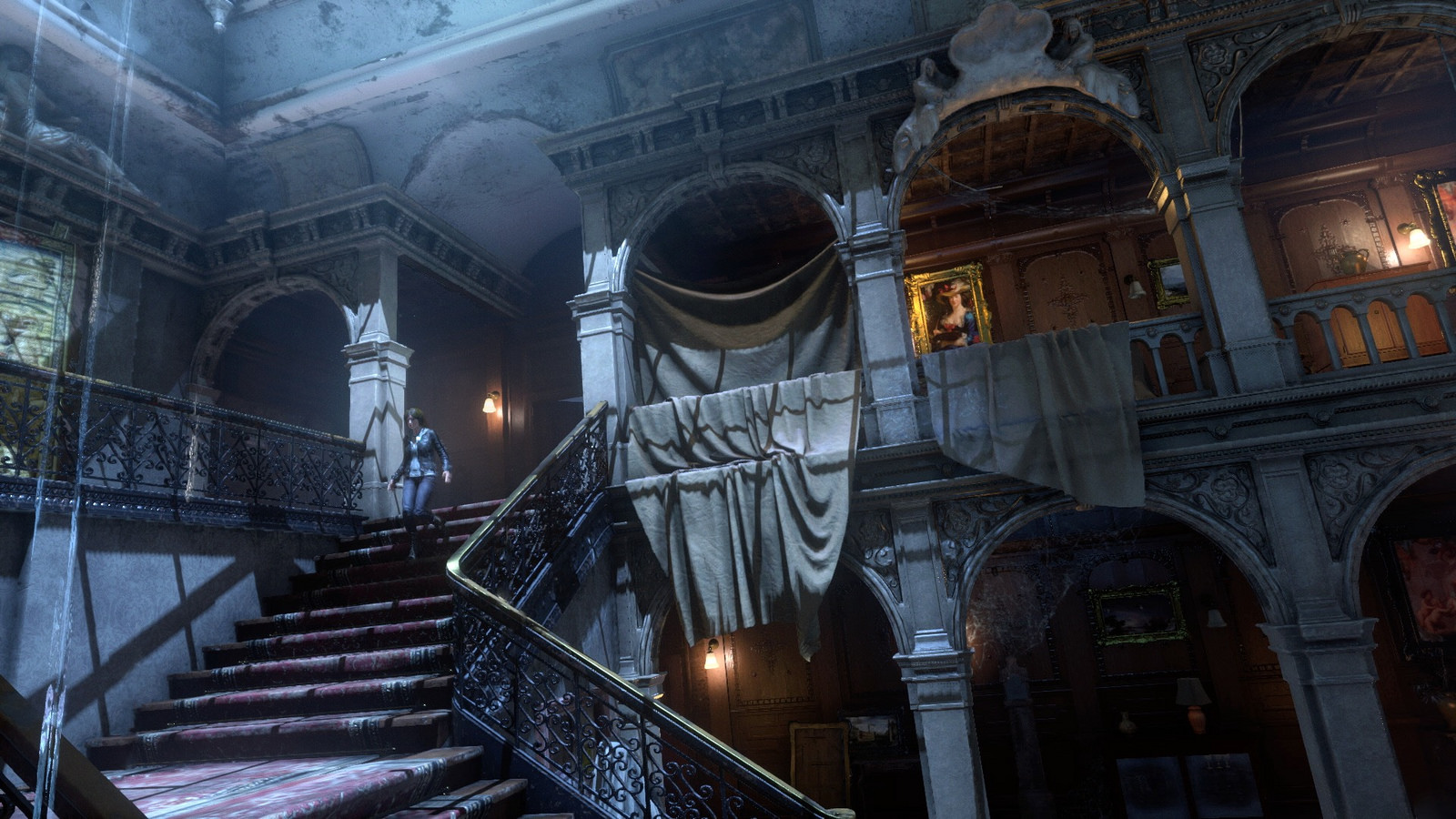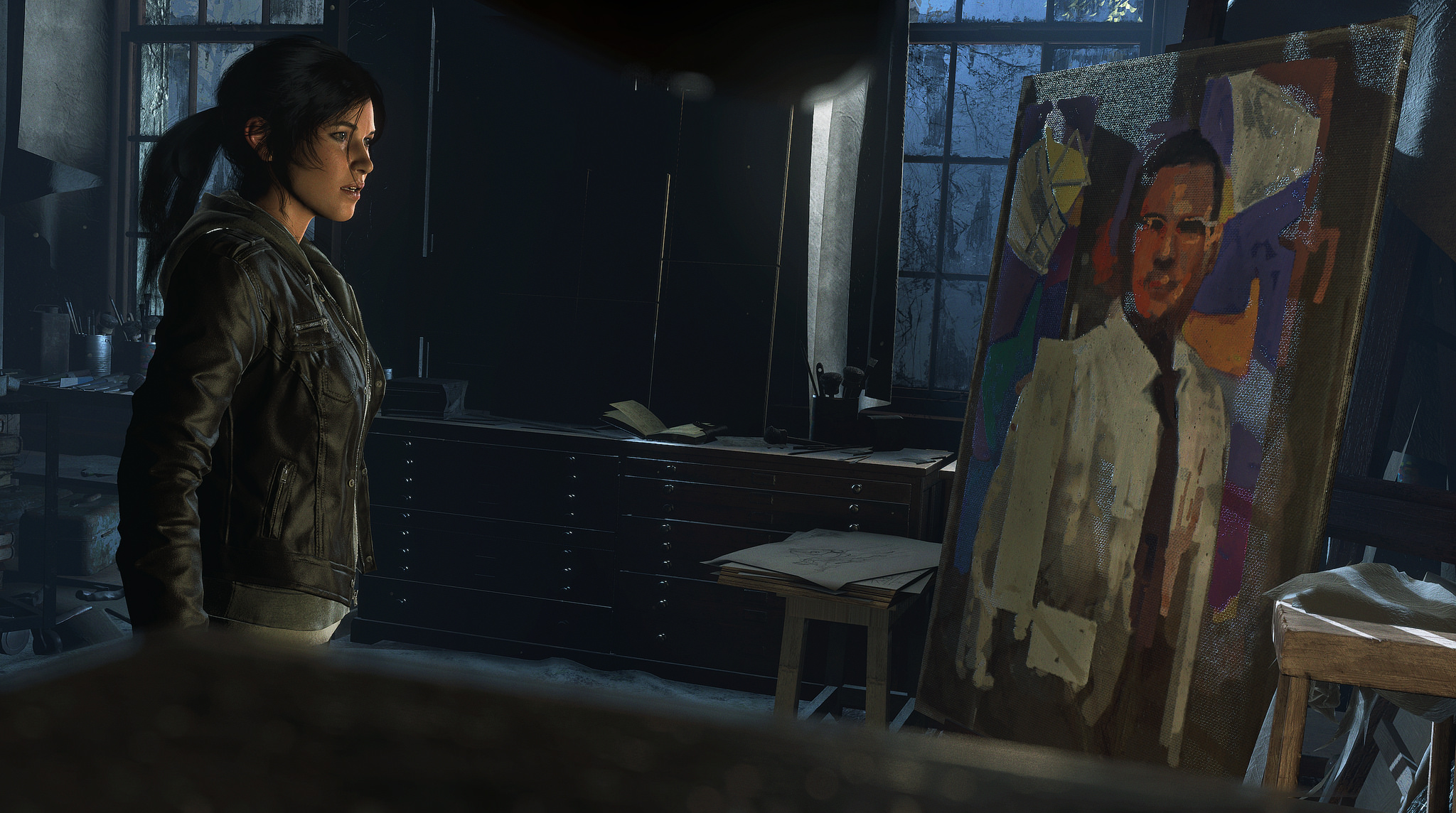I never took much interest in Tomb Raider II‘s campaign. While others eagerly set off on another globe-spanning adventure, climbing mountains and gunning down enemies, I stuck to the cozy confines of Croft Manor.
Lara Croft’s homestead was a virtual palace. It was both eloquent and yet somehow well suited to a woman that spent most of her days swinging over spike pits and leaping across chasms. Like the tombs and ruins Croft would raid in her travels, it held a treasure trove of secrets to uncover, and had a fascinating history behind it that begged me to spend hours digging up. Interactive Easter eggs littered every corner and, in an age where you couldn’t Google the answers in a few seconds, it always felt like there was something else to discover.
To return to that mansion in VR was a stroke of genius on Crystal Dynamic’s part. Of course, this isn’t the same Lara; 2013’s Tomb Raider reboot turned her into a grittier more relatable lead, and the Croft Manor featured in the PlayStation 4 version of its sequel, Rise of the Tomb Raider, reflects that. It’s not the sun-licked, finely polished mansion you visited before; gone is sthe prawling, outside assault course and obedient butler. Instead we have a building battered and beaten after years of abandonment and haunted by echoes of the past. But the heart and soul of the site, the sheer joy of exploring it, remains in VR.
You’ve probably already heard the comparison, but Rise of the Tomb Raider‘s Blood Ties mission, an aside to the main campaign, is a little like Lara Croft meets Gone Home. Threatened with losing her longtime residence, Lara sets out to sift through its remains and find the documents needed to keep it in her possession. As she explores, she begins to wonder if she even wants to keep hold of the mansion, especially as she dives into the history of her parents, uncovering notes left around the estate and unearthing old memories when visiting certain spots.
So, yes, that means all you’re essentially doing is walking and reading. Blood Ties implements a teleportation system for VR users that lets you quickly and comfortably dot around rooms, inspecting objects. There’s also a free walking control option, which is definitely preferable if you don’t suffer from simulation sickness like me, though I’ve heard from many that it drums up nausea pretty quickly even with the sluggish walking speed.
I started off pretty skeptical about the need for this VR support; I thought robbing Lara of her knack for jumping around and surviving just about any injury that would rip a normal person to shreds was a pretty lazy way to shoehorn headset support into Tomb Raider. But I have to confess that as I traveled further and further into the mansion I became enraptured in the story it was telling me. That skepticism was traded for intrigue. Lara’s heritage is a central theme in the main game, but Blood Ties gives you a much deeper look inside her parents’ relationship, so much so I’m surprised it wasn’t included in last year’s Xbox One release.
Ultimately my fascination with the story didn’t have much to do with the VR support; Blood Ties can be played on standard TVs and I suspect is just as enjoyable there. What playing in VR did add, however, was a sense of place. I felt a chill down my spine as I wandered down into a cellar, violent bursts of lightning temporarily illuminating the way. I imagined Lara’s mother hard at work in a study as I stood between her old paintings, searching for clues. I smiled fondly as I retraced steps a younger Lara had taken one birthday on a mock expedition.
Simply put, the joy of exploring the mansion and picturing those virtual memories in my mind was enhanced by the feeling of really being there.
There were moments that detracted from that feeling, however. I remember one of the first things I learned from a VR developer was that traditional scales for 2D games don’t work in VR. A door frame might feel smaller than expected, for example, or seats might appear comically tiny. I hadn’t actually experienced this until I played Blood Ties, though, and the user interface is similarly not optimized. Heading into a menu to inspect letters and items feels strange; I would have far preferred to be able to manipulate these objects within the game world itself.
Rise of the Tomb Raider‘s VR support isn’t anything like a system seller for PlayStation VR, nor does it make it a must buy for anyone that owns a headset. But for franchise fans, it’s a warm bit of comfort food, a chance to immerse yourself in the world of one of gaming’s most remembered characters and locations. I just hope that next time we become Lara we can go a step further.




























